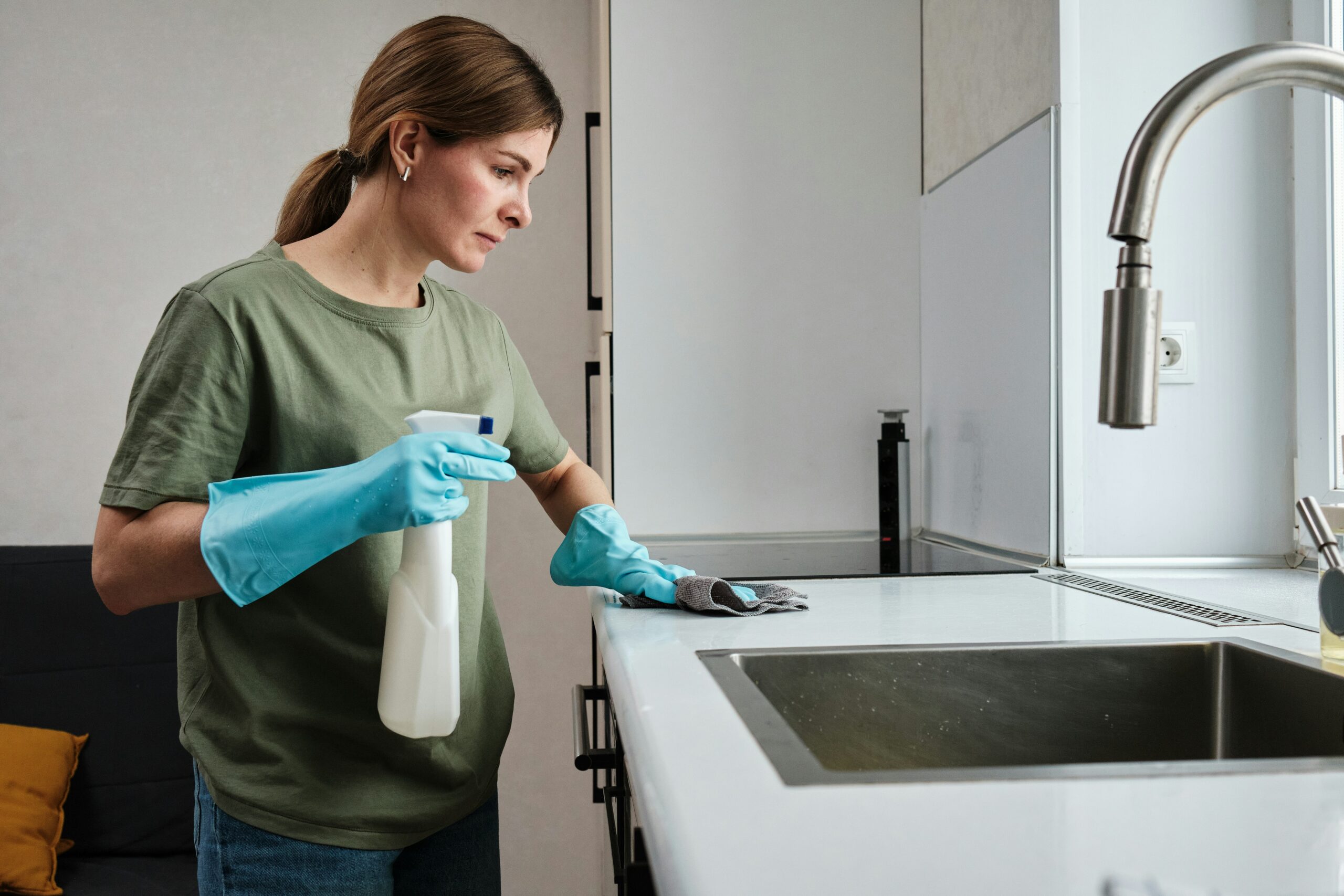
Top 10 Pest Control Tips to Keep Your Home Pest-Free
Pests can invade your home at any time, causing damage and health concerns. Whether it’s rodents, insects, or termites, effective pest control measures are essential for maintaining a clean and safe home. The best approach is prevention – keeping pests out before they become a problem. This guide provides the top 10 pest control tips to help you protect your home year-round.
1. Seal Entry Points to Keep Pests Out
One of the most effective ways to prevent pests is to seal any openings they can use to enter your home. Even small gaps around windows, doors, and utility openings can invite insects and rodents inside.
Check for cracks in your foundation, damaged screens, and gaps around pipes or vents. Use caulk or weather stripping to close these spaces and install door sweeps to block gaps under doors. Pay special attention to areas around pipes and electrical wiring where rodents often enter. A good rule of thumb is: if a pencil can fit through a gap, so can a mouse!
2. Keep Your Kitchen Clean and Free of Crumbs
Pests, especially ants, cockroaches, and rodents, are drawn to food sources. Keeping your kitchen clean can significantly reduce the chances of an infestation.
Wipe down countertops regularly, sweep floors to remove crumbs, and store food in airtight containers. Don’t forget to take out the trash frequently and clean under appliances where food particles can accumulate. Pay special attention to pet food bowls – leftover food can attract pests just as quickly as human food.
Consider deep cleaning your kitchen once a month by wiping down cabinets, scrubbing behind appliances, and checking for signs of pest activity, such as droppings or chew marks.
3. Eliminate Standing Water to Deter Mosquitoes and Other Pests
Mosquitoes breed in standing water, making it crucial to remove sources of moisture around your home. But mosquitoes aren’t the only pests that thrive in damp conditions – termites, cockroaches, and certain ants also need moisture to survive.
Check your yard for clogged gutters, puddles, or bird baths that collect water. Empty pet bowls overnight and ensure proper drainage in your yard to prevent water from pooling. If you have an air conditioning unit, make sure the condensation drain is functioning properly, as stagnant water aro9und it can also attract pests.
Inside your home, keep an eye out for leaky pipes and dripping faucets. Fixing water leaks not only prevents pest infestations but also helps protect your home’s structure from water damage.
4. Store Firewood and Debris Away from Your Home
Piles of firewood, leaves, and debris create ideal hiding spots for pests like termites, rodents, and spiders.
Keep firewood at least 20 feet away from your homie and store it off the ground. Regularly clean up yard debris and trim back vegetation touching your house to limit pest access. Wood piles near your home can serve as a direct bridge for termites and other wood-destroying pests.
If you have a compost pile, make sure it is properly contained and located far from your home. Decomposing organic material can attract flies, rodents, and other unwanted visitors.
5. Schedule Regular Pest Inspections
Even if you don’t notice pests, regular inspections can catch issues before they become severe. Termites, for example, often go undetected until major damage has been done.
Hiring a pest control professional for routine inspections ensures early detection and prevention. Professionals can identify risks and apply preventive treatments tailored to your home’s needs. They can also offer targeted solutions based on the specific pests common in your area.
6. Use Natural Repellents and Traps
For minor pest issues, natural remedies can help keep bugs and rodents at bay.
Diatomaceous earth works well against insects like ants and cockroaches, while essential oils like peppermint and citronella can deter spiders and mosquitoes. Placing bay leaves in pantry shelves can help repel certain types of insects, including weevils.
Sticky traps and humane rodent traps are also useful for monitoring pest activity. However, keep in mind that while natural remedies can be effective for small-scale prevention, larger infestations typically require professional pest control intervention.
7. Keep Your Home Dry to Prevent Infestations
Many pests, including termites and cockroaches, thrive in damp environments.
Use dehumidifiers in basements and crawl spaces to reduce moisture levels. Fix leaky pipes and check for condensation around windows and vents. A dry home is far less attractive to pests.
If your home has a crawl space, consider installing a vapor barrier to control moisture levels. Mold, mildew, and pests thrive in humid conditions, so addressing excess moisture is a key step in preventing infestations.
8. Maintain Your Yard and Landscaping
Overgrown grass, shrubs, and tree branches provide easy access for pests like rodents, ticks, and ants.
Keep bushes trimmed, mow your lawn regularly, and remove any rotting wood or organic matter from your yard. If you have mulch near your home’s foundation, consider using less-attractive materials like gravel to reduce pest sheltering spots.
Regularly inspect your yard for signs of pest activity, such as burrow holes, gnawed plants, or small insect nests. Taking action early can prevent pests from moving inside.
9. Properly Store Trash and Recyclables
Garbage is a major pest attractant, drawing flies, rats, and raccoons.
Use sealed trash bins with tight-fitting lids and avoid leaving garbage outside overnight. Rinse recyclables before placing them in bins to remove residue that attracts pests.
Consider placing bins on a concrete surface rather than on the ground, where rodents may have easier access. If possible, store garbage cans inside a shed or enclosed areas to reduce pest exposure.
10. Act Quickly at the First Sign of Pests
The longer a pest problem goes untreated, the worse it becomes. If you notice droppings, chew marks, or unusual sounds in walls, take immediate action.
Start with traps or natural deterrents, but if the problem persists, contact a professional pest control service for a thorough inspection and treatment plan. Acting early prevents the problem from spreading and becoming more costly to resolve.
Regularly check your attic, basement, and crawl spaces for signs of pest activity. These areas often go unnoticed but are common hiding spots for rodents, termites, and other pests.
Protect Your Home with Professional Pest Control
Following these pest control tips can help keep your home safe from infestations, but sometimes, professional assistance is necessary. If you are dealing with a persistent pest issue, expert intervention ensures effective, long-term solutions.
At West Termite & Pest, we provide expert pest control, termite control, and lawn care services across Arkansas and Oklahoma. Whether you need preventative treatments or active pest management, our team is here to help.
Contact us today for a free consultation and keep your home pest-free year-round!
Call your local West Termite location or fill out the form
on our contact page to schedule your inspection today!
More posts from West Termite, Pest & Lawn
Spring Into Action: Preventing Termite Infestations in Arkansas Homes
Termite infestations are a serious concern for homeowners in Arkansas, especially during the spring when these pests become most active. Preventing termite infestations early can save you from expensive structural damage and long-term headaches. Termites thrive in the...
Early Spring Lawn Care Tips: How to Keep Your Arkansas Yard Healthy
A healthy lawn starts in early spring. If you want lush, green grass by summer, the groundwork begins as the weather warms and the soil softens. The right early spring lawn care routine is essential for homes in Arkansas, where fluctuating temperatures and humidity...
Mosquito Season is Coming: How to Protect Your Arkansas Home This Spring
Spring is here, and with it comes mosquito season. As temperatures rise and moisture increases, mosquitoes begin to thrive across Arkansas. If you are not prepared, these presets can quickly invade your yard and turn outdoor activities into a battle against bites. The...



